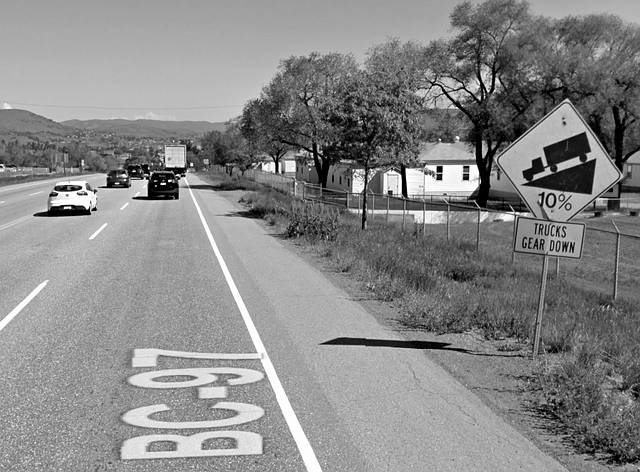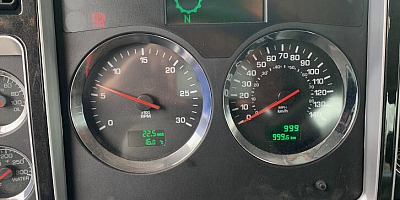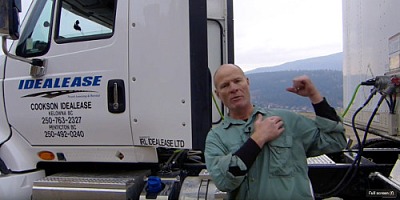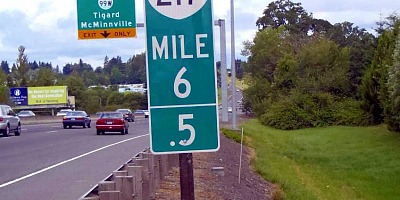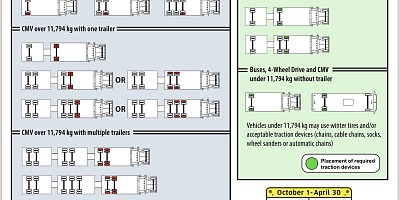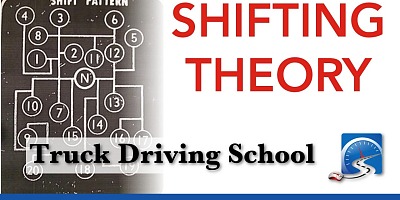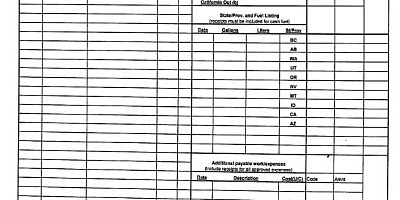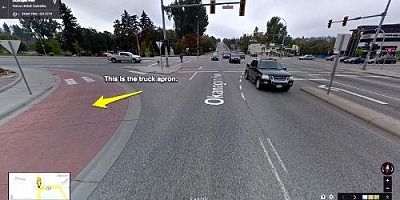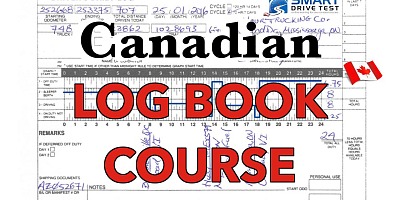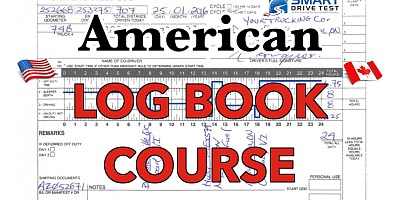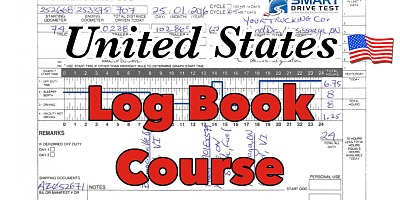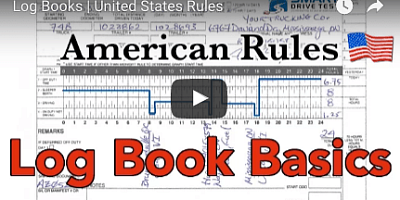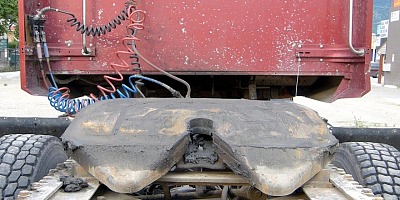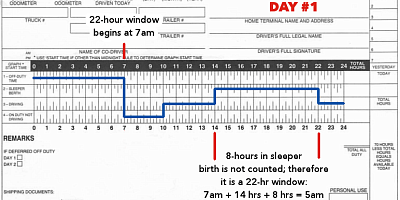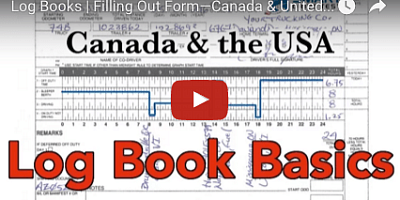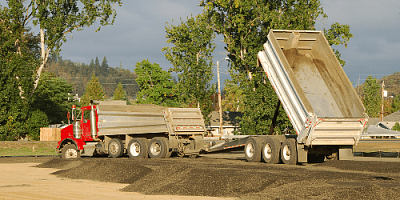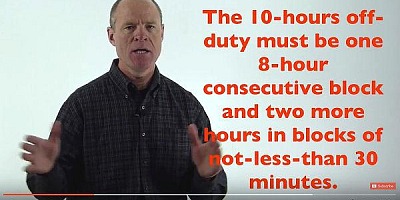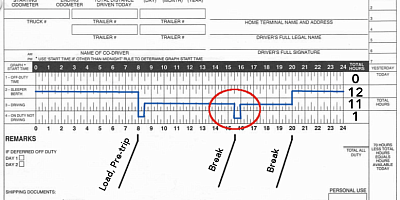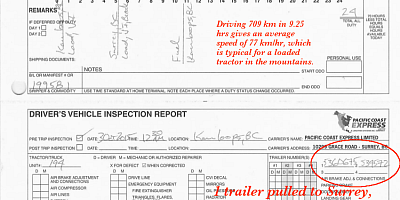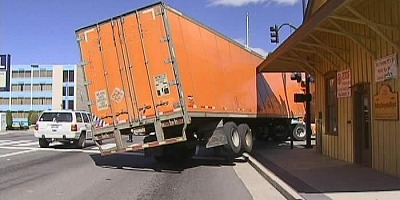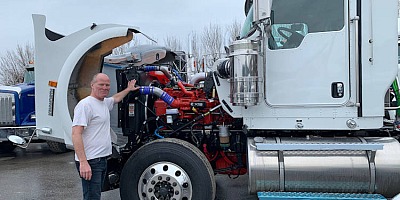Downhill braking is an essential--potentially life saving--skill for bus, truck & RV drivers.
Air Brakes | How to Brake Downhill Safely
Introduction
Technology and air brakes in the last 30-years has advanced to the point where air brakes are almost 100% bulletproof.
There's very few failings of an air brake equipped vehicle.
However, brake fade and driver error are the two weaknesses of the air brake equipped vehicle.
And just about any braking system suffers from the weakness of brake fade if you hold the brakes on long enough during a downhill descent.
| PASS CDL Air Brakes First Time - take this comprehensive course! | |
|
A course for truck, bus & RV drivers operating a vehicle fitted with air brakes.
This self-paced course gives you: • more than 100 practice test questions with feedback; |
Checklists & cheat sheets ensure your success
Grade Signs
This applies mostly to buses, mostly to trucks, some RV drivers, and people pulling RV trailers - heavier vehicles that need to get down the hill safely.
The first thing you need to understand is the grade signs.
The grade signs are listed in percentage of rise over run.
For example, if it's a six percent grade, that means that for every kilometre that you travel forward, the hill is going to drop vertically 60 metres (6'ft for every 100'ft forward) — the higher the percentage, the steeper the grade!
The next thing you need to know about grade signs is if the grade sign is less than a kilometer, most of the time‚ and I say this with some warning‚ most of the time it will not have a distance sign underneath it.
So there's no distance sign, it is less than a kilometer, however, I say that with some caution because there are hills in British Columbia that have grade signs, no distance signs, but they're far greater than 1 kilometer.
So know the hill, err on the side of caution if you don't know where you're going and having been down that hill before.
If the hill is less than a mile (1km) in length and less than 10%, use your service and engine brake! It usually isn't necessary to gear down.
13- or 18-Speed Transmission
We're standing here at the Hamilton Hill, 10 kilometers above Merritt, BC.
It's a six percent grade for 10 kilometers; 6 percent for those of you who don't know, it drops sixty meters for every one kilometre you go forward (6'ft for every 100'ft forward).
Rise over run, six percent grade.
It's a big hill, there's a big arrester bed at the bottom for those trucks that might run away.
In all the manuals it says to go down the hill in one gear lower than what you went up the hill.
You Don't Always Go Up A Hill to Go Down
That advice doesn't work very well in British Columbia or other moutainous areas because many hills, you don't go up a hill before you go down a hill.
13- or 18-speed, single-digit grade, 5th gear in a tandem-tandem.
If you're running heavier than a tandem-tandem, or you got dual digits, go down into fourth, Jake brake on.
Run the Jake (auxillary brake) between 15 and 1800rpm.
Most trucks today are 13- or 18-speed transmissions.
Automatics are beginning to make some inroads into the industry, but for the most part most of the trucks that you will be driving are 13- or 13-speeds.
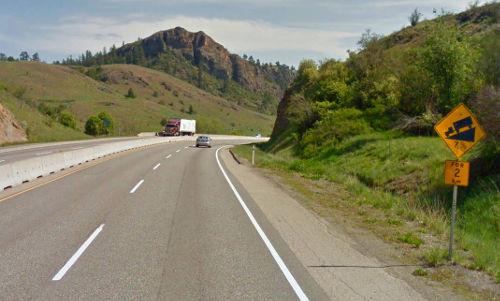 Tandem-Tandem Trucks
Tandem-Tandem Trucks
And I use this as a basis for teaching people how to drive down hill.
So if your driving tandem-tandem‚ two axles on the back of the truck, two axles on the trailer, 13- or 18-speed:
• fifth gear low;
• on a less than 10 percent grade;
• Jake (engine brake) or auxillary brake on full.
Jake brakes are designed to provide maximum braking capability at high RPMs‚ between 15 and 1900 rpm.
5th gear low, Jake on high, tandem-tandem, less than a 10% percent grade.
Really Heavy Vehicles
The next heavier vehicle‚ anything heavier than tandem-tandem, anything over 10% you probably want to be down in fourth
If you're hauling Super 'B's at 63,500 kilograms (140,000lbs), you're probably even wanna be down into third.
If you do the technique right, you got the Jake brake on (auxillary brake), your in the right gear, the Jake brake (auxillary brake) will hold the vehicle back all the way down the hill and you will not have to use the brakes at all.
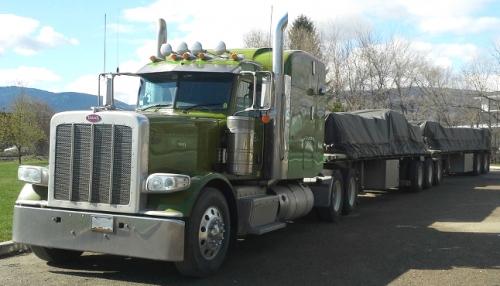
Snubbing
However, if you're in a gear and it's not quite right and it's not holding going down the hill and you do have to apply the brakes, apply what is called snubbing.
Run it up to 1,900, hard, short, intermittent brake applications, bring it down to fourteen fifteen hundred, let it run back up again‚ hard, short, brake applications, let it run back up again.
In the introduction I talked to you about brake fade...
Brake fade is the only weakness of not only an air brake equipped vehicle, but every other type of vehicle - every other type of vehicle equipped with brakes as well.

